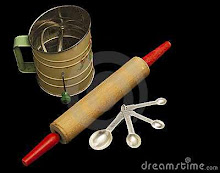For me here in Maine we still have lots of snow... So for me I'm thinking what I want to plant and how I'm going to improve my soil...
Hope you enjoy this...Blessings..
Starting to build a new garden isn’t difficult. Most people begin by going out into their yards with a shovel or garden tiller, digging up the dirt and putting in a few plants. Following the organic and natural methods, add a little mulch or compost, and you’re well on your way to make good soil for your homegrown vegetables. But in the long run, the success of your garden depends on making healthy garden soil. The more you can do to keep your soil healthy, the more productive your garden will be and the higher the quality of your crops.
In the last issue, I discussed the value of soil care methods that imitate natural soil communities. These include protecting soil structure, feeding the soil with nutrients from natural and local sources, and increasing the diversity and numbers of the microbes and other organisms that live in the soil.
In this article, I’ll focus on specific ways to achieve these goals. There are many ways to do this, but they all revolve around two basic concepts: For more fertile soil, you need to increase organic matter and mineral availability, and whenever possible, you should avoid tilling the soil and leave its structure undisturbed.
1. Add manures for nitrogen. All livestock manures can be valuable additions to soil — their nutrients are readily available to soil organisms and plants. In fact, manures make a greater contribution to soil aggregation than composts, which have already mostly decomposed.
You should apply manure with care. Although pathogens are less likely to be found in manures from homesteads and small farms than those from large confinement livestock operations, you should allow three months between application and harvest of root crops or leafy vegetables such as lettuce and spinach to guard against contamination. (Tall crops such as corn and trellised tomatoes shouldn’t be prone to contamination.)
However, because some nutrients from manures are so readily available, they are more likely to leach out of the soil (where they’re needed) into groundwater and streams (where they’re pollutants). Also, if manures are overused, they can provide excess amounts of some nutrients, especially phosphorus. Because of this, it may be best to restrict fresh manures to heavy feeding, fast-growing crops like corn, and process additional manure by composting.
In this article, I’ll focus on specific ways to achieve these goals. There are many ways to do this, but they all revolve around two basic concepts: For more fertile soil, you need to increase organic matter and mineral availability, and whenever possible, you should avoid tilling the soil and leave its structure undisturbed.
ADD ORGANIC MATTER
For the best soil, sources of organic matter should be as diverse as possible.1. Add manures for nitrogen. All livestock manures can be valuable additions to soil — their nutrients are readily available to soil organisms and plants. In fact, manures make a greater contribution to soil aggregation than composts, which have already mostly decomposed.
You should apply manure with care. Although pathogens are less likely to be found in manures from homesteads and small farms than those from large confinement livestock operations, you should allow three months between application and harvest of root crops or leafy vegetables such as lettuce and spinach to guard against contamination. (Tall crops such as corn and trellised tomatoes shouldn’t be prone to contamination.)
However, because some nutrients from manures are so readily available, they are more likely to leach out of the soil (where they’re needed) into groundwater and streams (where they’re pollutants). Also, if manures are overused, they can provide excess amounts of some nutrients, especially phosphorus. Because of this, it may be best to restrict fresh manures to heavy feeding, fast-growing crops like corn, and process additional manure by composting.
When thinking of manure, it’s worth considering our own. Flushing “humanure” away disrupts aquatic ecosystems, and represents a net loss of potential fertility from agricultural soils. On the other hand, human manure requires cautious management to avoid spreading disease. I recommend Joe Jenkins’ The Humanure Handbook, the bible on this subject.
Read more: http://www.motherearthnews.com/Modern-Homesteading/2007-06-01/How-To-Make-Garden-Soil.aspx#ixzz1GudC3UOg
Read more: http://www.motherearthnews.com/Modern-Homesteading/2007-06-01/How-To-Make-Garden-Soil.aspx#ixzz1GudC3UOg










No comments:
Post a Comment